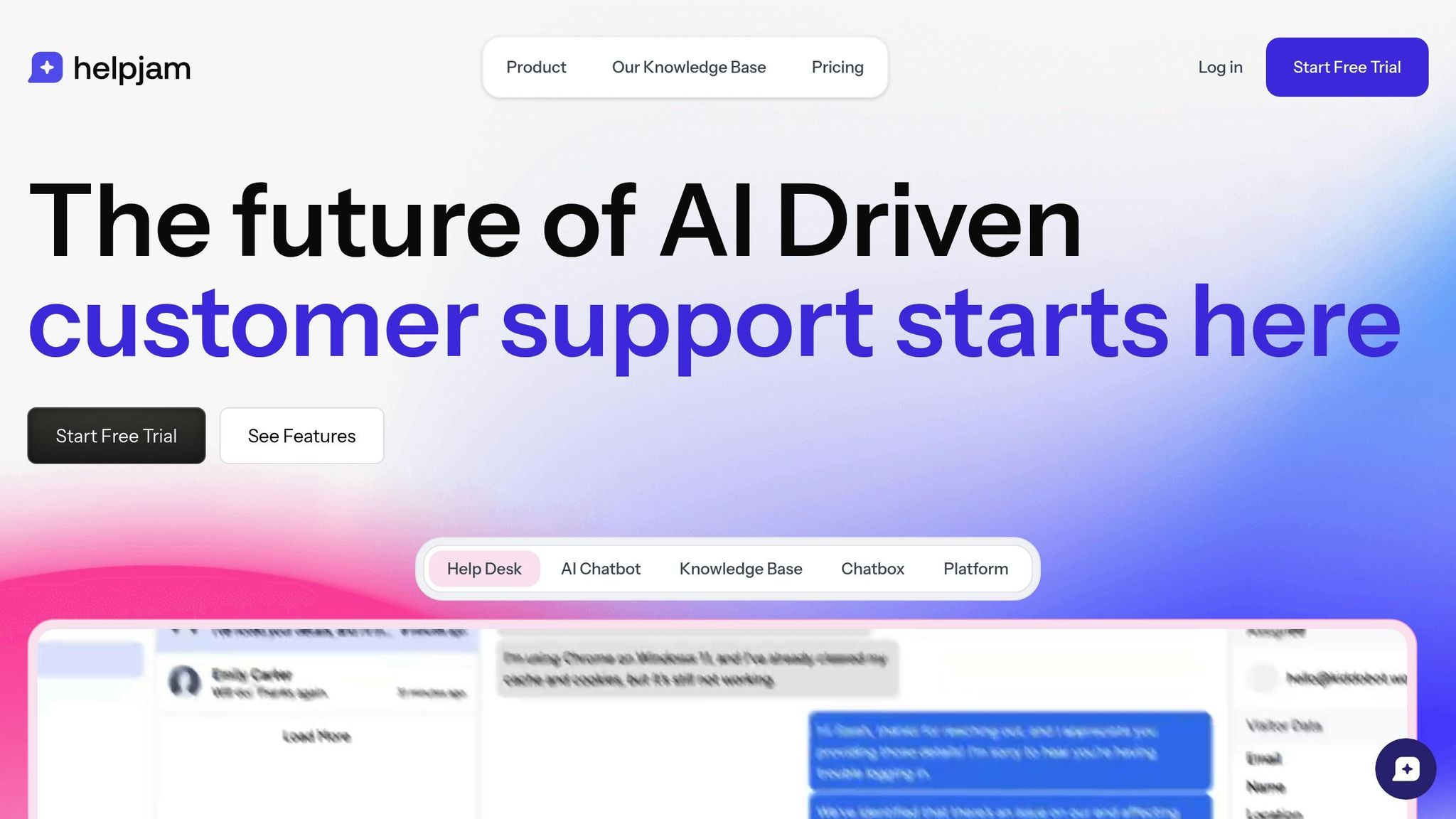How to Use Behavioral Patterns for Predictive Support
Learn how to leverage behavioral patterns for predictive support, enhancing customer experience and team efficiency before issues arise.

Predictive support is about solving customer problems before they even ask for help. By analyzing user behavior - like repeated visits to help pages, drop-offs after actions, or frustrated interactions - businesses can step in early with tailored solutions. This approach reduces support tickets, improves customer satisfaction, and helps teams focus on complex issues.
Here’s how it works:
- Behavior Tracking: Identify confusion through repeated actions (e.g., revisiting the same help page).
- Proactive Triggers: Offer help when users abandon forms or show signs of frustration.
- Sentiment Analysis: Detect mood changes to escalate issues or adapt responses.
With tools like HelpJam, you can automate these workflows, track customer sentiment, and refine content based on search patterns. Predictive support not only enhances customer experience but also boosts team efficiency by addressing problems before they escalate.
Reading Customer Behavior Signals
Understanding how customers interact with your platform can help address issues before they escalate. By analyzing these behaviors, you can offer timely support and improve the overall experience.
Page Visit Patterns
If a user keeps returning to the same help article, it might mean they're confused or the content isn't meeting their needs. For example, visiting the Getting Started guide three times in 30 minutes suggests they're struggling.
HelpJam's AI keeps an eye on these patterns in real time and can:
- Trigger contextual chat prompts to offer direct help.
- Recommend related articles that might better answer their questions.
- Track time spent on a page and exit points to identify where users give up.
- Notify support teams about potential content gaps that need attention.
Post-Action User Dropoffs
When users stop engaging after completing an action - like setting up an account or submitting a form - it could mean they're unsure about what to do next or they ran into a problem. For instance, if someone finishes account setup but does nothing within 10 minutes, HelpJam will send a prompt to check in and offer assistance.
Support Escalations and Mood Changes
Changes in user sentiment, like multiple chatbot transfers, slower response times, a negative tone, or repeated questions, often indicate frustration or confusion.
HelpJam uses sentiment analysis to identify these signals and adjust the support approach by:
- Flagging the issue for immediate human intervention.
- Providing detailed explanations or alternative solutions.
- Recommending escalation to a senior agent when necessary.
Why Use Predictive Support
Predictive support uses behavior signals to deliver clear, measurable outcomes:
Fewer Incoming Tickets
- Prevent issues from escalating by stepping in early when users show signs of confusion.
- Offer timely guidance with contextual help tailored to users' behavior patterns.
Better User Retention
- Reduce frustration and build confidence with proactive, personalized support.
- Deliver tailored experiences based on how each user interacts with your product.
Boost Support Team Efficiency
Predictive support helps teams work smarter by automating routine tasks and spotting issues early. This allows support teams to:
- Handle growth without adding staff.
- Focus on solving complex problems.
- Provide better responses with AI-driven insights into user behavior.
- Avoid ticket backlogs by addressing potential problems before they escalate.
Up next, see how HelpJam sets up these predictive workflows.
Setting Up Predictive Support in HelpJam

Set up automated triggers in HelpJam to provide proactive support based on user behavior and interaction patterns.
AI Chat Responses Based on User Behavior
With HelpJam's AI chatbot, you can address potential issues by monitoring user actions:
- Prompt a chat when a user repeatedly visits the same article.
- Offer help if users abandon forms midway.
- Suggest related articles after several page navigations.
These triggers can be easily customized using the no-code automation builder.
Tracking Customer Mood in Real Time
HelpJam evaluates sentiment and interactions to spot dissatisfaction early:
- Assess message tone to understand user sentiment.
- Flag delays in responses or signs of user impatience.
- Identify users making repeated attempts to resolve the same issue.
Analyzing Search Patterns
HelpJam's search analytics reveal content gaps and help refine your support materials:
- Highlight queries with no results to identify missing content.
- Track popular searches to understand evolving user needs.
- Review search paths to improve article recommendations.
You can fine-tune these settings directly in the HelpJam dashboard.
Conclusion: Smarter Support with Prediction
HelpJam's predictive workflows transform customer support from reactive to proactive, ensuring smoother experiences that build both trust and loyalty. By addressing key behavioral signals early, your team can resolve potential issues before they become bigger problems.
Following these steps allows agents to focus on complex cases and strategic initiatives, while automation efficiently manages routine inquiries. Over time, as the AI processes more behavioral data, its predictions become even sharper, leading to more tailored and effective support.
With HelpJam, predictive support becomes a scalable solution that equips your team with actionable insights. This approach strengthens customer relationships and supports your business's growth.





